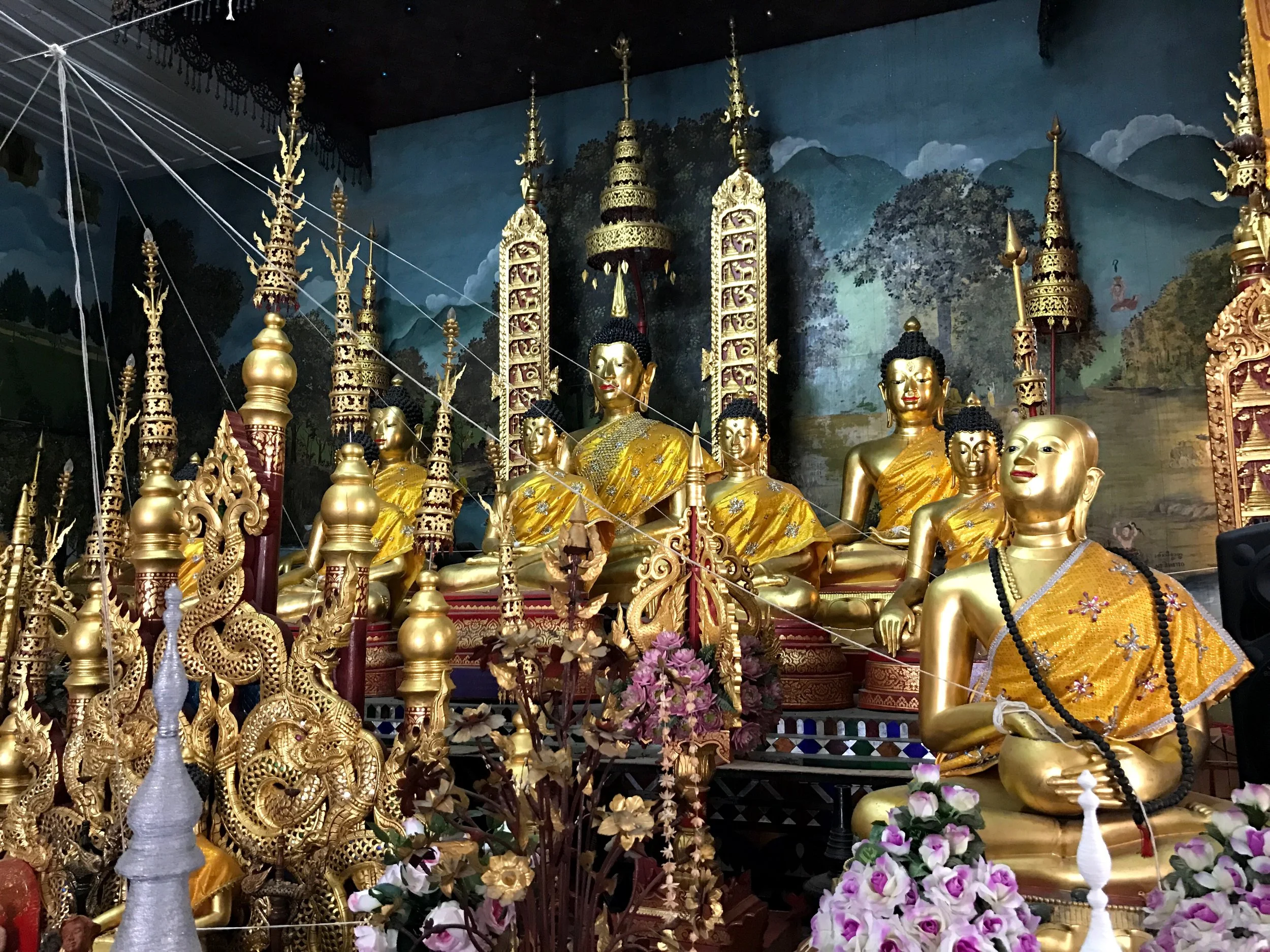The Thai spirits of Nang Ta-khian and the Nariphon lure men to their deaths or entice them to have sex — with drastic consequences.
These ribbons and dresses are offerings to the Thai tree spirit, Nang Ta-khian, who can help you win the lottery, heal, help with a pregnancy — or lead you to your death
As Wally and I were following the trail that led to Mae Ya Waterfall, part of Doi Inthanon National Park, we stumbled upon a clearing with picnic tables and an impressive tree with lengths of colorful satin cloth tied around its trunk — complete with a small altar. I knew of the traditional belief of phi, or spirits, that inhabit trees, but was trying to process what the addition of vibrant jewel-toned silk women’s dresses was all about.
“Nang Ta-khian sings mournful songs to beckon wandering men. Those who get too close are drawn into her powerful embrace, eventually subsumed by her branches.”
Tree-hugging Wally is part of a long-standing worldwide tradition of worshiping trees
Tree Worship Around the World
Tree worship exists in many cultures and is often associated with fertility, longevity and rebirth. It’s not surprising, given that their roots reach down into the underworld while their branches extend to the skies. Many mythologies, from Greco-Roman to Celtic and Druid, stated that the gods themselves took the form of trees. In Buddhism, the bodhi tree is a sacred symbol for having provided shelter to the Buddha while he attained enlightenment.
Learn about the Norse Tree of Life, Yggdrasil.
Where Buddhism and Animism Meet
When the Thai adopted Buddhism as their national religion, they folded their ancient animistic beliefs (that every natural object, such as mountains, trees and animals, has a soul) into their practice of Buddhism.
I later learned that the brightly colored dresses and ribbons are part of a sanctuary shrine to Phi Nang Ta-khian, an ancient female spirit named for the takian tree. Found near rivers or streams, she can anthropomorphize, shifting her tree form into that of a slender, long-haired, beautiful young woman wearing a traditional pha tung, or long wraparound skirt.
The Sacred Takian Tree and the Legend of Nang Ta-khian
Takian trees are considered sacred and are rarely felled for lumber, since her spirit will become furious and curse whoever uses the wood. The only ones holy enough to cut down a takian are monks, and they must hold a ceremony requesting Nang Ta-khian’s permission first. She is considered a mostly benevolent spirit but can become malevolent, releasing a dreadful shriek that fills the air when proper homage is not paid to her.
In certain versions of the story, Nang Ta-khian is said to sing mournful songs to beckon wandering men. Those who get too close can be drawn into her powerful embrace, eventually subsumed by her limbs.
Devotees of Nang Ta-khian place traditional Thai silk dresses at the foot of the takian tree as an offering. Like the famous ghost Mae Nak, the spirit can be asked to protect those who are pregnant, provide safe passage to travelers and reveal winning lottery numbers for material gain. (Thais are obsessed with their lotteries.) Nang Ta-khian is also known to heal, and the resin from the takian tree is a popular medicinal styptic used to stanch bleeding and as an ointment for wounds. A takian growing near the bank of a river with its roots protruding above ground is to be avoided, for the spirit of that tree is a fierce one. Whoever relieves himself near the base of such a tree will suffer from ulcers.
The nareepol tree’s fruit turns into hot 16-year-old girls who tempt hermits to have sex with them
The Nareepol Tree’s Strange, Sexual Fruit
Equally intriguing was a discovery we made one evening while at the Anusam Night Market. I noticed a pair of tiny gray male and female figurines for sale. Of course I wanted to purchase them simply because they looked old and exotic, but was discouraged by Wally. (They were quite expensive — the vendor was asking 2,500 baht, or about $75.) As I was researching Nang Ta-khian, I stumbled upon an interesting folk tale about these powerful talismans.
According to the Vessantara Jataka, the god Indra was afraid that his consort, Lady Phusati, would be attacked by lustful ruesi, forest-dwelling hermits. So he created a grove of nareepol trees bearing fruit in the shape of identical beautiful maidens in Phusati’s likeness known as nariphon to distract them.
If a man plucks a nariphon and has sex with her, he will become sterile. And if he had any magical abilities, those would also be lost to him. The nariphon are born as 16-year-old girls (sans bones) and have a short life, dying after only seven days. They then wither and shrink into themselves and become fertility amulets like those we saw at the market. –Duke
“If a man plucks a nariphon fruit maiden and has sex with her, he’ll become sterile.”























